‘Sweatin’ to the (Black and) Goldies’: Purdue Pete assists Health and Kinesiology researchers to produce exercise videos for kids’ fitness, mindfulness
Written by: Tim Brouk, tbrouk@purdue.edu
Purdue Pete is not the next Richard Simmons.
First, everyone’s favorite Boilermaker and the late, flamboyant fitness and weight-loss guru have very different hairstyles: Simmons’ hair defined frizziness while Pete has kept a short, conservative black haircut under that helmet for generations. Simmons’ voice could get almost as loud as Mackey Arena, and Pete does not look as good in short shorts.
However, the two shared a passion for getting people up and moving. So, it was a natural fit when Purdue Pete went in front of the cameras for exercise and mindfulness videos aimed at 10- to 12-year-old schoolers. Soon to be distributed to different schools in the state of Indiana for research purposes, the videos were produced by Purdue University’s Alvin Kao, assistant professor in the Department of Health and Kinesiology, and PhD student Riley Schellingerhout.
“We’re going to give them (schoolteachers) exercise videos to give students a little extra activity into their days, and Purdue Pete was a fun way to demo that,” said Schellingerhout, noting the first research study will be over a 12-week period. The short videos depict Purdue Pete doing sessions of push-ups, jumping jacks, mountain climbers and numerous other exercises for about one minute each. He also leads the children in stretching and breathing exercises. The goal of the videos is to not only get children hooked on exercise and mindfulness at an early age but to see how consistent, short workout sessions during the school day affect the young people’s grades and cognitive functions.
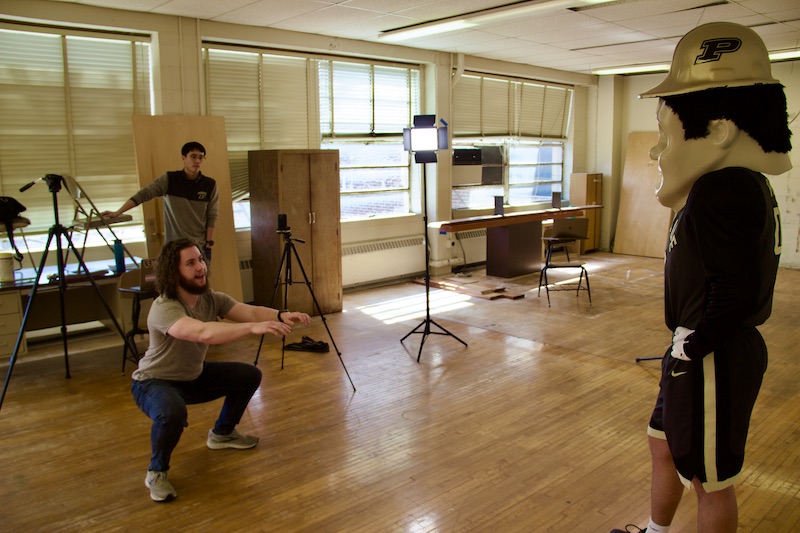
Riley Schellingerhout, crouching and Health and Kinesiology PhD-track graduate student, and Alvin Kao, health and kinesiology assistant professor, direct Purdue Pete through an exercise video segment.Tim Brouk
The videos are accompanied with computer graphics and animations that encourage the students to move as well as to help them achieve mindfulness. The videos are designed to be done any time during the school day, not just during physical education (PE) class.
Schellingerhout noted the videos could be utilized as an alternative for children who don’t enjoy or have trouble participating in PE classes.
“Part of doing this and making it fun for them instills that value that exercise makes you feel better and helps you do better in school,” he added.
On location in Lambert
With an online metronome clicking away to ensure an even pace, Schellingerhout and Kao put Pete through the paces in a formerly used office in Lambert Fieldhouse. The videos were shot against a plain, white background so digital graphics could easily be added during postproduction.
Most of the exercises focused on cardio work for higher heart rates, but there were also squats for strength and hopping on one foot for balance.
Gathering data
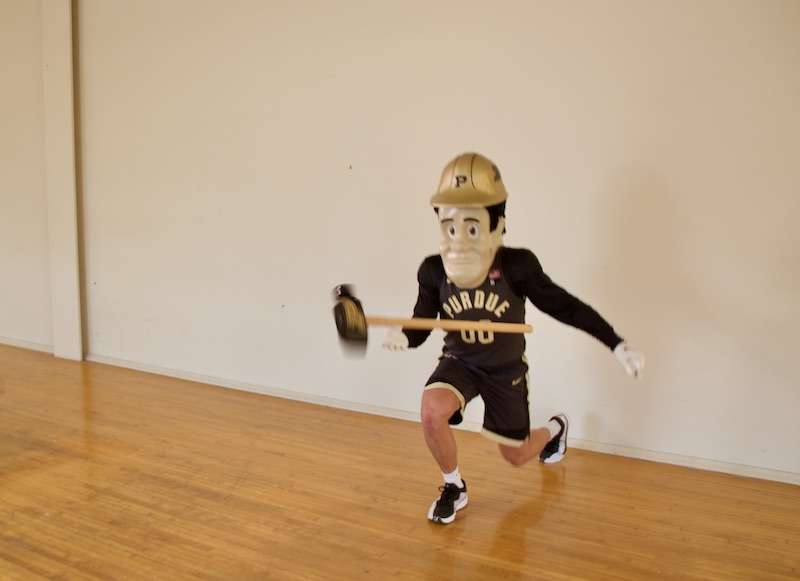
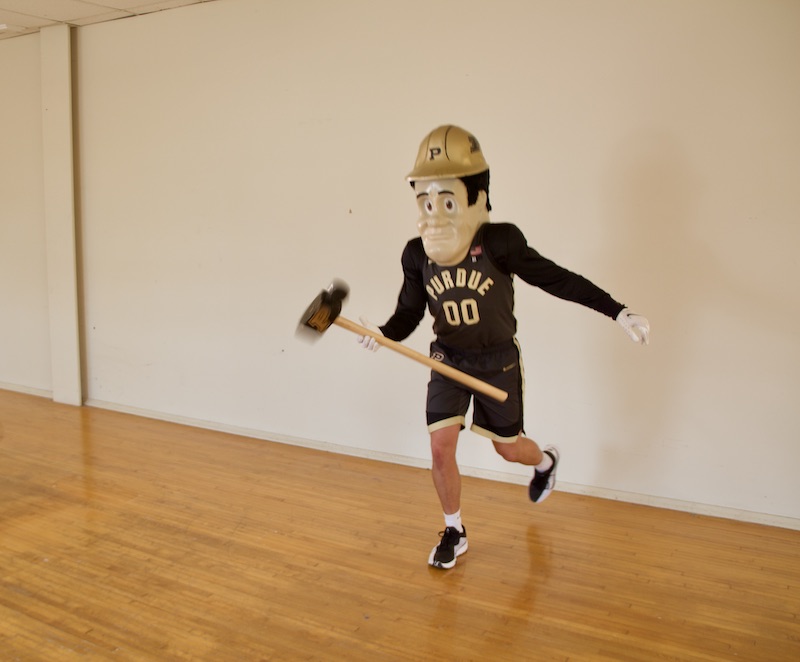
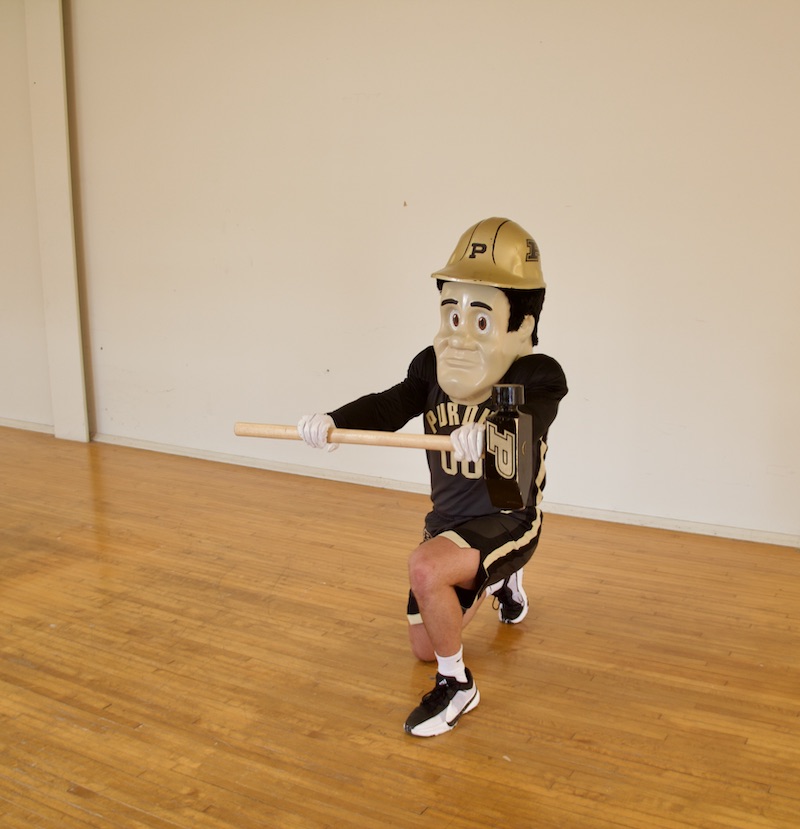
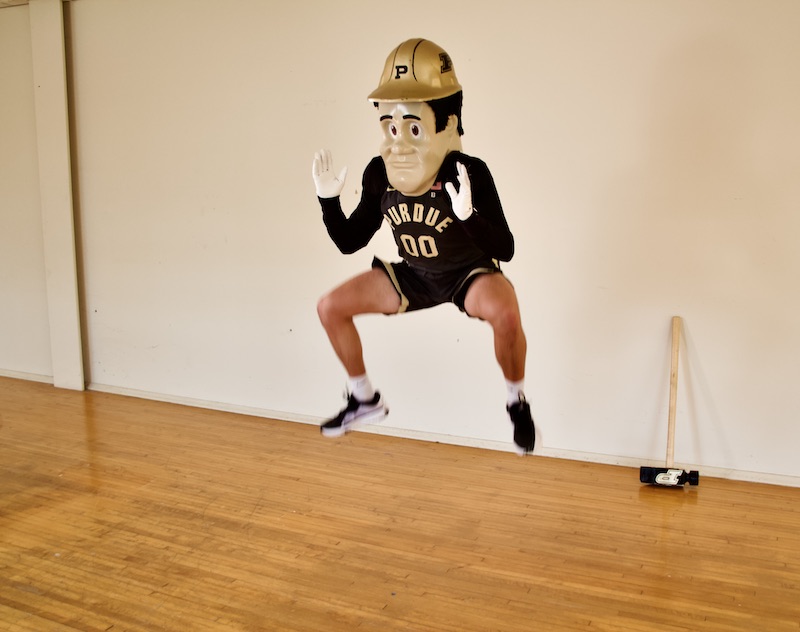
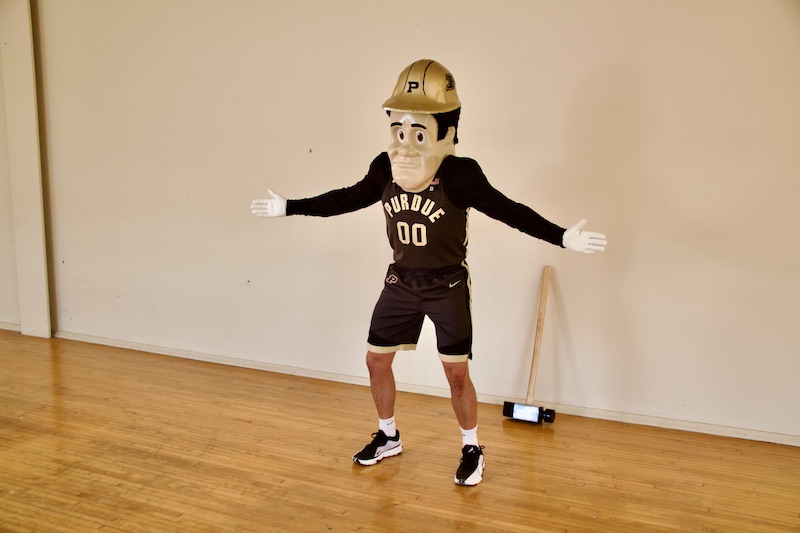
Before the schools start the program, participating students will complete computer-based tasks, which will measure task accuracy and response times that reflect cognitive abilities. The students will also undergo physical testing via FitnessGram assessments for aerobic capacity (Progressive Aerobic Cardiovascular Endurance Run [PACER]), muscular strength and endurance (push-up and curl-up), and flexibility (back-saver sit-and-reach).
After the 12 weeks, the students will undergo the cognitive and physical fitness assessments again. Any changes to their scores will be entered into the database.
Three control groups of students will not participate in the mindful exercise video program, but they will undergo the same cognitive and physical tests for comparison data after receiving different 12-week “control” programs that involve only mindfulness, only exercise, or educational videos without physical activity and mindfulness.
The research project is funded by the National Institute of Child Health and Human Development under the National Institutes of Health.
Mindfulness matters
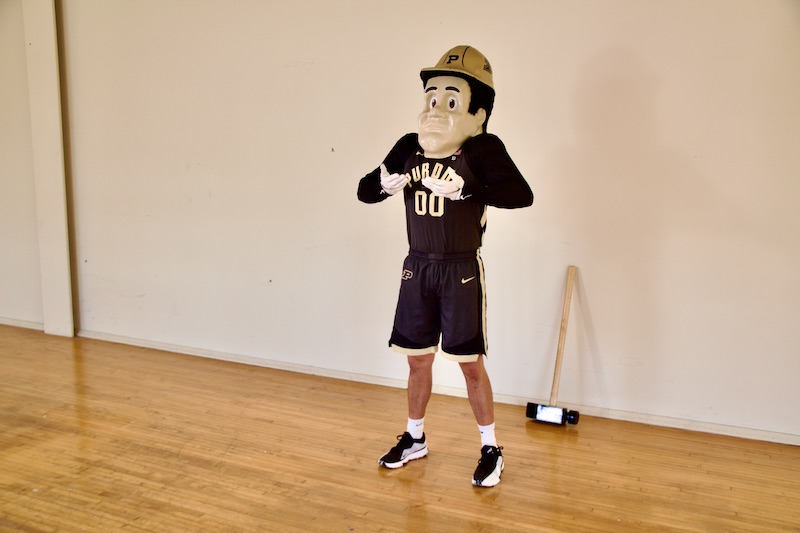
Purdue Pete practices some deep breathing during a mindfulness portion of the video shoot.Tim Brouk
Kao emphasized the dual goal of fitness and mindfulness for the videos. While the students will learn to properly execute lunges, crawl ups and planks, Kao will have them practice mindfulness techniques between the interval exercises. He believes physical exercise and mindfulness is the ultimate combination.
“They could be a complementary approach to generating larger cognitive and brain benefits,” he said. “The field of kinesiology, specifically exercise psychology, already shows that exercise and mindfulness can both enhance cognition and brain function. Our goal is to strategically deliver mindfulness practice during the recovery periods of interval exercise to see if this mind-body approach can further maximize their positive effects on children’s cognitive development.”
With the fun animations and imagery to encourage exercise and mindfulness, Kao believes the videos will encourage the young students to embrace these health behaviors. Negative thinking between exercises, such as focusing on how tired you are or how difficult that set of lunges was, may discourage the desire to exercise in the future, Kao said.
“We provide them with a fun experience and positive mindful instructions to help them to focus on the moment and observe the exercise-induced sensation of their body and mind without judging,” he added. “If we teach them some approaches and help them to develop these habits, there is a chance they could then internalize that physical activity as part of their lifestyle and become more willing to exercise.”
Late this fall, Kao and Schellingerhout will investigate how the daily, short exercises helped students excel physically and mentally during the school year. After this first round of experiments, Kao and Schellingerhout will report initial efficacy before refining the videos — eventually expanding them to include other age ranges of students, not just middle schoolers.
“Eventually, we could modify those videos to be available to our Purdue students,” Kao said. “They could be online, and they could watch the videos with the guidance to do those activities. They could be expanded for more iterations of the exercises and mindfulness instructions.”
Discover more from News | College of Health and Human Sciences
Subscribe to get the latest posts sent to your email.